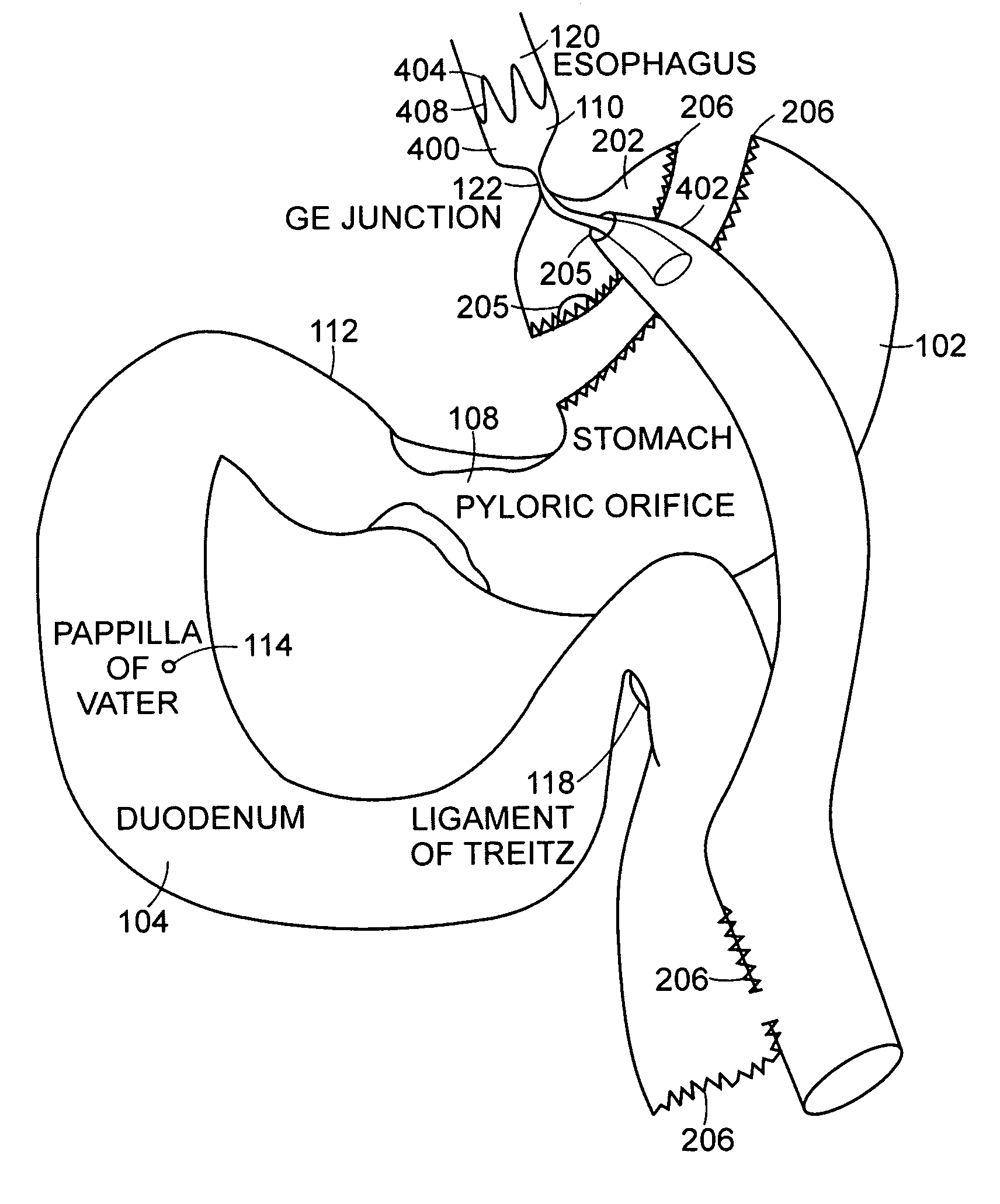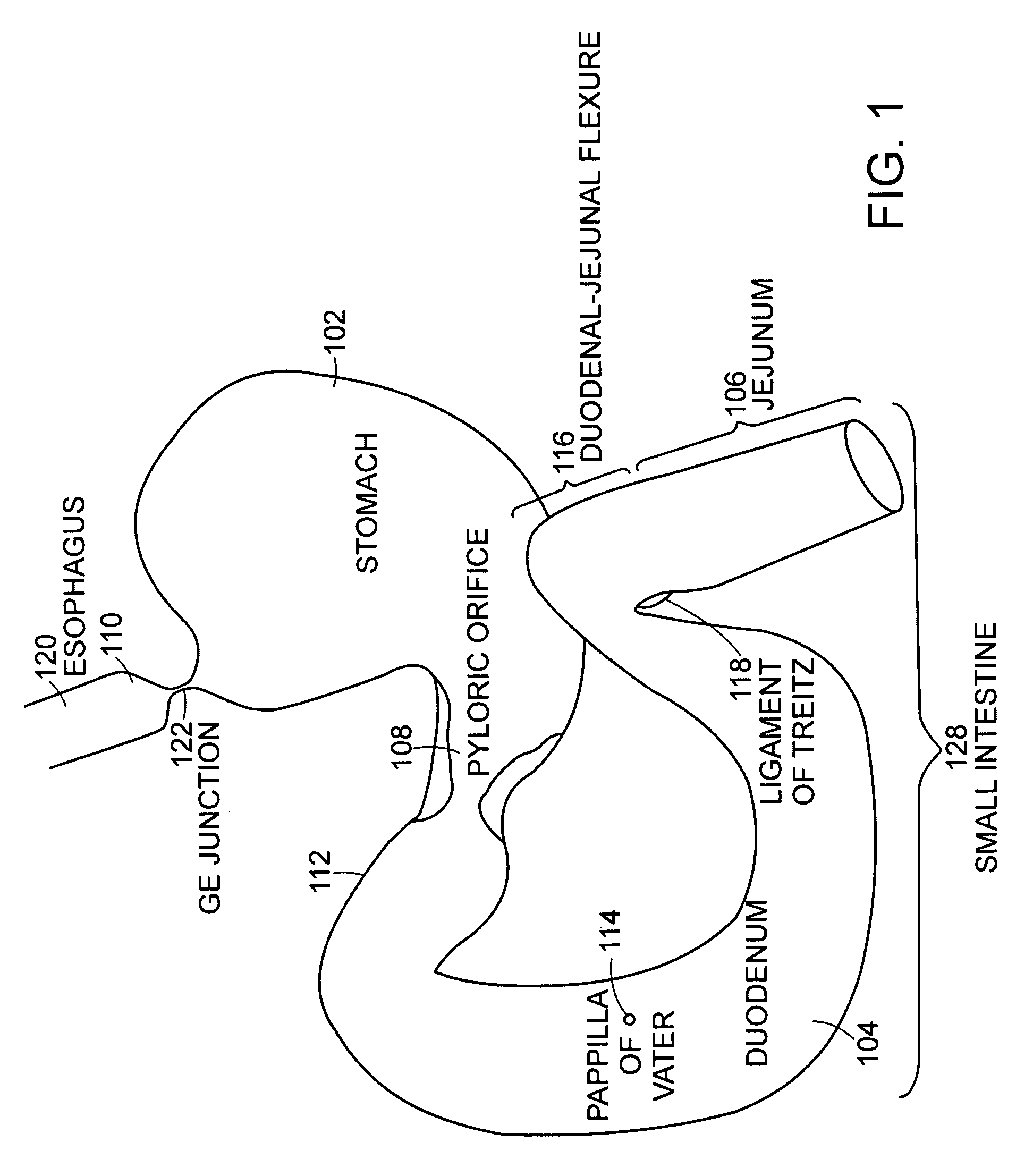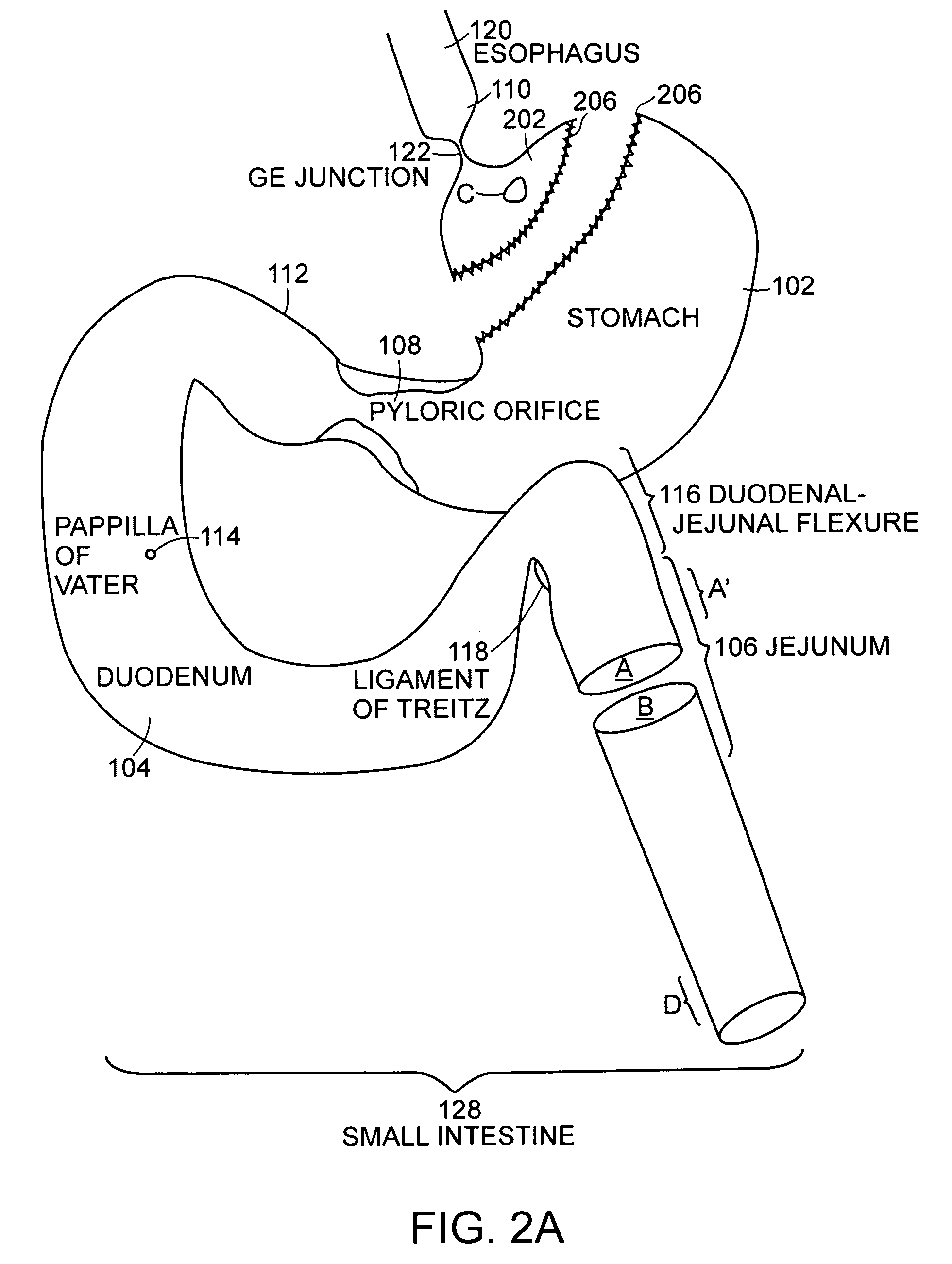Use of a gastrointestinal sleeve to treat bariatric surgery fistulas and leaks
a gastrointestinal sleeve and bariatric surgery technology, applied in the field of gastrointestinal sleeve to treat bariatric surgery fistulas and leaks, can solve the problems of tissue damage, difficult to remove the stent, use of stents, etc., and achieves minimally invasive delivery, minimal tissue trauma, and substantial flexure
- Summary
- Abstract
- Description
- Claims
- Application Information
AI Technical Summary
Benefits of technology
Problems solved by technology
Method used
Image
Examples
Embodiment Construction
[0034]A description of preferred embodiments of the invention follows.
[0035]A fistula is an abnormal connection between organs. Fistulas and leaks can occur as a result of bariatric surgery, in particular after a Roux-en-Y gastric bypass procedure. A gastrointestinal implant device is anchored in the esophagus and extends through a stomach pouch into an intestine anastomosed to the stomach pouch to prevent fistulas and other damaged tissue from making contact with food and / or fluids entering the esophagus, thus enabling healing of the damaged tissue.
[0036]FIG. 3 is a sectional view of a body showing one embodiment of the gastrointestinal implant device 400 implanted in the esophagus, preferably just above the GE Junction 122. The device 400 includes an anchor and a sleeve. The anchor may have drawstrings to facilitate the removal of the implant device 400. The anchor has a relaxed diameter of 0.7-1.5 inches (20-40 mm). The sleeve attached to the anchor may be at least 6 inches (150 ...
PUM
 Login to View More
Login to View More Abstract
Description
Claims
Application Information
 Login to View More
Login to View More - R&D
- Intellectual Property
- Life Sciences
- Materials
- Tech Scout
- Unparalleled Data Quality
- Higher Quality Content
- 60% Fewer Hallucinations
Browse by: Latest US Patents, China's latest patents, Technical Efficacy Thesaurus, Application Domain, Technology Topic, Popular Technical Reports.
© 2025 PatSnap. All rights reserved.Legal|Privacy policy|Modern Slavery Act Transparency Statement|Sitemap|About US| Contact US: help@patsnap.com



